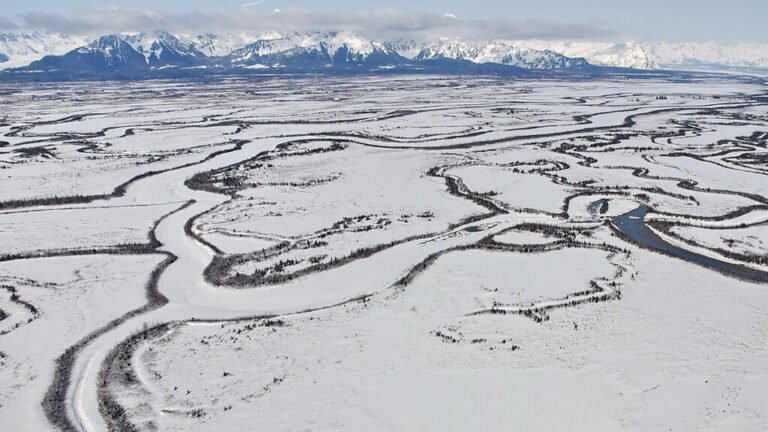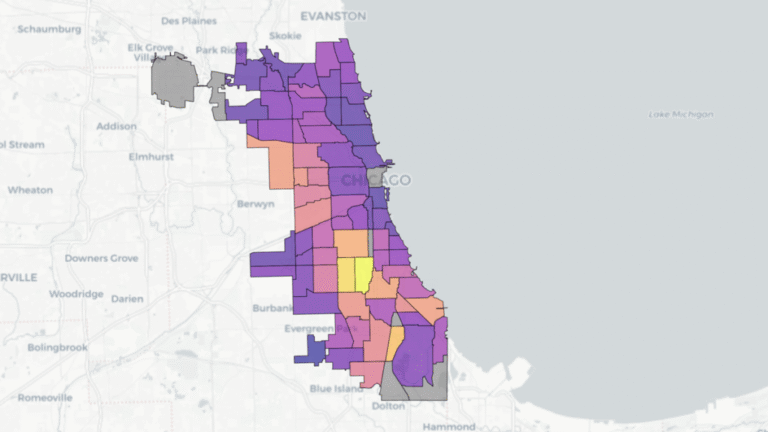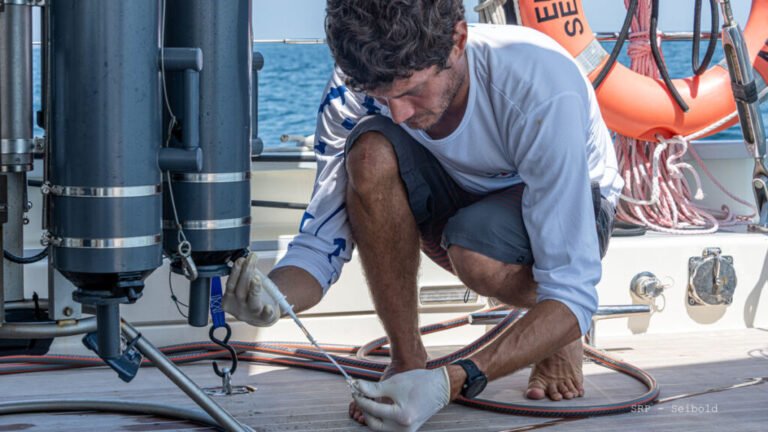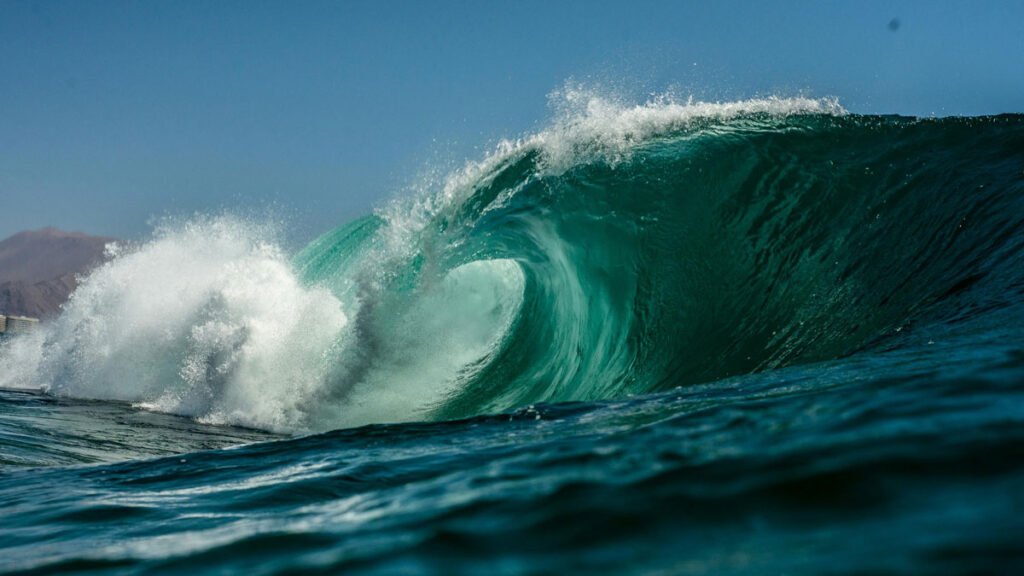
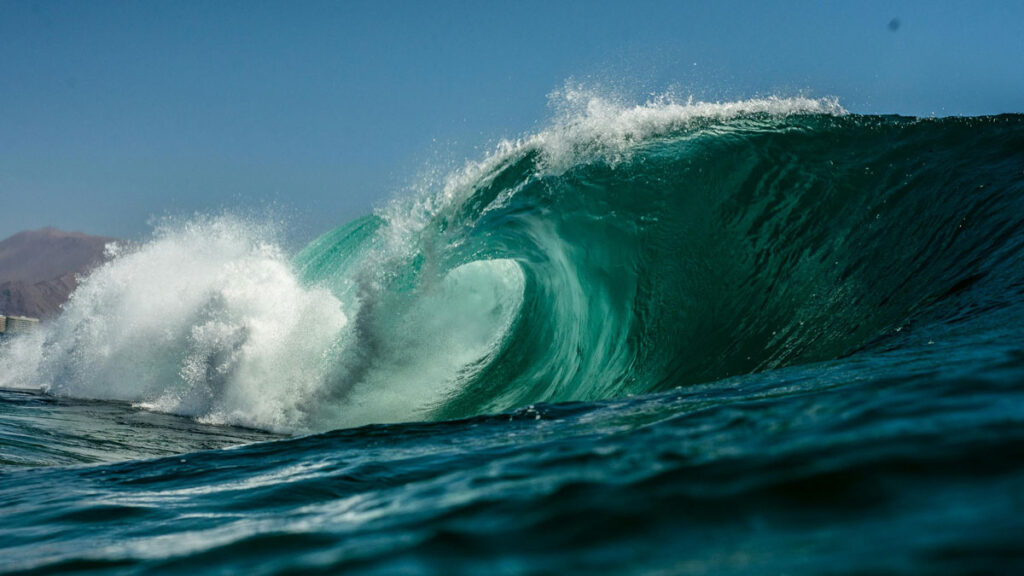
“It’s a good thing we can’t hear it with our ears. Otherwise, we’d just have this constant din from the oceans.”
The steady thrumming of crashing waves is the ocean’s soundtrack. But behind that calming rhythm is a host of hidden chaotic sound waves, most of which are too low in frequency for humans to hear. This acoustic energy travels as infrasound through the air and as seismic waves through the ground. “It’s a good thing we can’t hear it with our ears,” said Stephen Arrowsmith, a geoscientist at Southern Methodist University in Texas. “Otherwise, we’d just have this constant din from the oceans.”
Recently, scientists developed a new method to monitor surf’s acoustic and seismic signatures to identify individual breaking waves within the noise. The findings could allow for new methods for monitoring sea conditions from land and even provide insights into conditions in the upper atmosphere.
A Signal in the Noise
Scientists first discovered surf-generated infrasound more than 20 years ago. One study, led by Arrowsmith, even detected infrasound more than 124 miles (200 kilometers) inland. While the number of such studies has slowed over the past decade, researchers at the University of California, Santa Barbara (UC Santa Barbara), who typically study volcano seismology realized they were well positioned to contribute to surf infrasound research. “We have the proximity to the coastline here on campus, so it seemed an interesting thing to explore,” said Robin Matoza, an Earth scientist and senior author on the paper.
While past studies had detected surf infrasound only as a continuous wall of noise, the researchers suspected that with new advances in computation as well as in acoustic and seismic detection, they could identify the acoustic signatures of individual waves.
The team, led by geologist Jeremy Francoeur, who conducted the work for his master’s thesis at UC Santa Barbara, installed a single infrasound sensor that collected near-continuous data for 10 months, from September 2022 to July 2023. Then, in October 2023, they conducted an intensive field experiment over 6 days, deploying a network of 12 infrasound sensors and one seismometer across a roughly 500-foot area near the Santa Barbara coast.
“One of the biggest surprises was that the same infrasound signals are being generated by surf nearly every day.”
The researchers also took GoPro videos to correlate specific ocean waves with the infrasound and seismic profiles they generated. They then selected the signatures of five waves as templates to match against the 10 months of single-sensor acoustic data, picking out individual crashing waves among all the infrasound recorded. “One of the biggest surprises was that the same infrasound signals are being generated by surf nearly every day,” said Francoeur in an email. The approach revealed up to tens of thousands of individual surf events per day.
“I liked how they were able to identify discrete surf events using this local array,” said Arrowsmith, who wasn’t involved in the new study. “Previous studies on this, including mine, were not able to do that.”
The researchers found they could detect discrete infrasound signals only when breaking waves were over approximately 6.5 feet (2 meters) high, suggesting that a minimum amount of energy is required to generate detectable infrasound. When waves were detectable, however, the size of the water’s waves correlated with acoustic signal strength. This finding was particularly noticeable in the winter months when larger storm swells reach the California coast.
By timing when infrasound signals hit each sensor in the network, the scientists triangulated the positions of the waves, pinpointing a hot spot of acoustic activity to a specific rocky reef area just offshore. This suggests that certain bathymetric features might be more effective than others at generating detectable infrasound. The findings were published in Geophysical Journal International.
From the Surf to the Sky
Monitoring and locating the infrasound signature of surf could offer a new method for monitoring sea conditions using land-based sensors, which is critical for maritime safety and coastal management and research. Sea conditions are most often studied using ocean-based buoys or video monitoring, which is obscured at night and in foggy conditions.
The new method could also have applications far beyond the coast. If the signals from individual waves can be detected at greater distances from shore, they could offer information about conditions in the upper atmosphere. This is possible because infrasound enters the upper atmosphere, and features like temperature and wind speed modulate the waves before they refract in the stratosphere and return to Earth.
By comparing the signatures of individual surf events detected at sensors positioned at different distances, scientists say it could be possible to correlate specific acoustic signals with atmospheric conditions, providing a new tool for studying weather patterns and atmospheric dynamics.
“If you have repetitive signals, you can monitor small changes in those signals,” Matoza said. “You could use that to infer changes in the atmosphere.”
—Andrew Chapman (@andrewchapman.bsky.social), Science Writer
Citation: Chapman, A. (2025), Scientists tune in to the ocean’s sound waves, Eos, 106, https://doi.org/10.1029/2025EO250384. Published on 16 October 2025.
Text © 2025. The authors. CC BY-NC-ND 3.0
Except where otherwise noted, images are subject to copyright. Any reuse without express permission from the copyright owner is prohibited.
